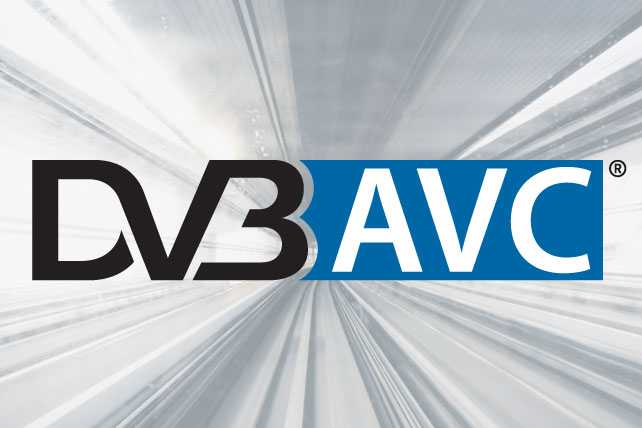
DVB approves the specification for next-generation video codecs to deliver 4K and 8K broadcast and streaming television
A new revision of the DVB-AVC specification adding two new video codecs – VVC and AVS3 – has been approved by the DVB Steering Board and is available now as DVB BlueBook A001r21 and will soon be published as ETSI TS 101 154 V2.8.1.
The DVB Project maintains a single specification for the use of video and audio coding in broadcast and streaming applications which is constantly updated with the latest codecs . The specification is extensively referenced worldwide and defines DVB audio and video conformance points, to be used for all DVB delivery methods (terrestrial, satellite, cable, IPTV, and DVB-DASH). The new revision will soon be published by ETSI and will add support for next-generation video codecs VVC, from ISO/IEC MPEG and ITU-T VCEG, and AVS3, from the AVS Workgroup.
The specification includes four conformance points for AVS3 and VVC, the minimum requirement being a baseline receiver capable of supporting resolutions up to 4K (3840×2160) with HDR and standard frame rates. The three additional conformance points cover the support of high frame rates (HFR) and resolutions up to 8K (7680×4320). The video coding parameters of the four conformance points for both VVC and AVS3 match, giving consistency in service levels across codecs.
These new video codecs are important enablers of enhanced experiences for broadcast and broadband, like 8K, as well as for accelerating the adoption of 4K UHD. DVB also provides reference streams that implementers can use for verification and validation (V&V), available here.
An update to the DVB-DASH specification, including the addition of the VVC and AVS3 video codecs, was also approved by the DVB Steering Board (BlueBook A168r6) and will shortly be published as ETSI TS 103 285 V1.4.1.
VVC (Versatile Video Coding)
Published in November 2020, VVC is the latest member of the family of video coding standards developed jointly by ISO/IEC MPEG and ITU-T VCEG. Results submitted to DVB showed that VVC surpasses the DVB commercial requirement for over 30% bitrate saving compared to HEVC, (its predecessor in the same family), for the same subjective quality. This makes VVC one of the most efficient video coding technologies currently available. VVC also adds optional functionality to the specification to provide advanced accessibility and for creating composite video streams from multiple videos.
AVS3
AVS3, published in October 2021, is the latest member of the family of video coding standards developed by the Audio Video Coding Standard Workgroup of China. Results submitted to DVB indicate that AVS3 surpasses the DVB commercial requirement for over 30% bitrate saving compared to HEVC for the same subjective quality. This places AVS3 among the world’s most efficient video coding technologies. The AVS Workgroup was founded in 2002, and its specifications have been widely used in HDTV and 4K television broadcasting in China. The high profile, now adopted in DVB, was finalized in August 2021 and published as an AVS industry standard (T/AI 109.2-2021).
